Grupo 4/Group 4: Clarissa, Alex, Bethany and David
We woke up to a (relatively) cool morning for our last full day at Chamela. We had our regular breakfast at 7:30am: classic eggs and beans with a side of corn tortillas. We heard a Ferruginous Pygmy Owl (Glaucidium brasilianum) calling in the distance and Steve (unfortunately unsuccessfully) used his speaker to try to lure it closer. We hypothesize that this particular owl was angry because Group 3 had spent the last day encroaching on its territory (or at least within earshot) with their own Ferruginous Pygmy Owl playbacks.
We then met in the courtyard to briefly go over the plans for our last day at Chamela. Steve and Javier told us to enjoy the sun and warmth while it lasts, because pretty soon we would be back to the snow, slush, and cold of Kingston. They also suggested that we get going on our final stages of data collection, because we would be leaving early the next day and this was our last chance. Group 3 and 4 went out to collect more data, while the other groups stayed behind to do some preliminary data visualization and analysis and to wrap up their field notebooks.
Although it was a ‘fresh’ morning for the locals here at Chamela, it still was a hot and sweaty one for some of us Canadians, despite our 2 week residency. Once everyone had coalesced into the library, we started to ID the butterflies (order Lepidopterans) we had taken pictures of over the last few days using the two field guides provided by Steve and Javier. It turns out that Mexico, being a megadiverse country (we hear this a lot!), has a lot of butterfly species and many of them look almost identical. We did our best to identify each individual to the species, but made sure to record genus and family as well.
We had a quick break for lunch, and then came together again to discuss butterfly taxonomy, with some of our favourites being the Giant Leopard Moth (Hypercompe scribonia), Gilbert’s Flasher (Astraptes alector), and the Surprisng White (Pereute charops), which, surprisingly, isn’t white at all. By the end we all very much appreciated butterfly diversity. Mikaela gave our last species presentation on the Barred Whiptail, a local lizard species (Holcosus undulatus).
Our last class activity was Steve’s instructions on the scientific paper we will soon begin to write. The professors and TAs then collected all out field notebooks and began the arduous task of (at least attempting to) read and grade them. We students took the time to enjoy our last sunset all together in Mexico. After dinner of cheese (and no sauce) pizza, we had a debrief in the courtyard where we discussed how incredible of an opportunity this course was for all of us. Then it was off to pack, as we had a very early morning the next day, with alarms being set for around 5:45.
With packing to music and sharing our favourite parts of the course, we shared some final laughs (and a few tears) in Chamela. A lengthy bus ride and two planes and to go!
Español
Grupo 4: Clarissa, Alex, Bethany y David
Despertamos con una mañana (relativamente) fresca para nuestro último día completo en Chamela. Desayunamos como siempre a las 7:30: los clásicos huevos con frijoles y tortillas de maíz. Escuchamos el canto de un búho pigmeo ferruginoso (Glaucidium brasilianum) a lo lejos y Steve (desafortunadamente sin éxito) usó su altavoz para intentar atraerlo. Nuestra hipótesis es que este búho en particular estaba enojado porque el Grupo 3 había pasado el último día simulando invasiones en su territorio (o al menos al alcance del oído) con sus propias grabaciones de búho pigmeo ferruginoso.
Luego nos reunimos en el patio para repasar brevemente los planes para nuestro último día en Chamela. Steve y Javier nos dijeron que disfrutáramos del sol y el calor mientras durara, porque muy pronto volveríamos a la nieve, el aguanieve y el frío de Kingston. También sugirieron que avanzáramos con las últimas etapas de la recopilación de datos, ya que saldríamos temprano al día siguiente y esta era nuestra última oportunidad. Los grupos 3 y 4 salieron a recopilar más datos, mientras que los demás grupos se quedaron para explorar y realizar el análisis preliminar de datos y para finalizar sus libretas de campo.
Aunque era una mañana fresca para los habitantes de Chamela, para algunos canadienses seguía siendo calurosa y sudorosa, a pesar de nuestra residencia de dos semanas. Una vez que todos nos reunimos en la biblioteca, comenzamos a identificar las mariposas (orden Lepidóptera) que habíamos fotografiado durante los últimos días usando las dos guías de campo que nos proporcionaron Steve y Javier. Resulta que México, al ser un país megadiverso (¡lo oímos mucho!), tiene muchas especies de mariposas y muchas de ellas son casi idénticas. Hicimos todo lo posible por identificar cada individuo con su especie, pero también nos aseguramos de registrar el género y la familia.
Hicimos una breve pausa para almorzar y luego nos reunimos de nuevo para hablar sobre la taxonomía de las mariposas. Algunas de nuestras favoritas fueron la polilla leopardo gigante (Hypercompe scribonia), la mariposa de Gilbert (Astraptes alector) y la mariposa blanca sorprendente (Pereute charops), que, sorprendentemente, no es blanca en absoluto. Al final, todos apreciamos mucho la diversidad de mariposas. Mikaela dio nuestra última presentación sobre la especie conocida como Barred Whiptail, una especie de lagartija local (Holcosus undulatus).
Nuestra última actividad de clase fueron las instrucciones de Steve sobre el trabajo científico que pronto comenzaremos a escribir. Los profesores y ayudantes auxiliares recogieron nuestras libretas de campo y comenzaron la ardua tarea de (al menos intentar) leerlos y calificarlos. Los estudiantes aprovechamos para disfrutar de nuestro último atardecer todos juntos en México. Después de cenar pizza con queso (sin salsa), tuvimos una charla informativa en el patio donde comentamos la increíble oportunidad que este curso representaba para todos nosotros. Después, a preparar el equipaje, ya que al día siguiente madrugamos mucho, con el despertador programado para las 5:45.
Preparando el equipaje con música y compartiendo nuestras partes favoritas del curso, compartimos algunas risas (y algunas lágrimas) en Chamela. ¡Un largo viaje en autobús, dos aviones y vámonos!
- chachalaca!
- San Blas jay
- yellow-breasted chat
- pale-billed woodpecker
- many-lined whiptail
- Our list of butterflies and moths
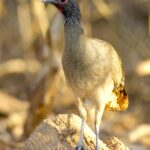
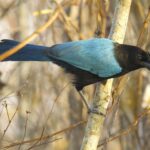
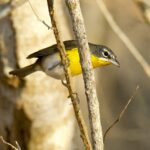
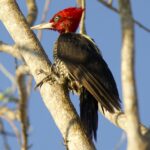
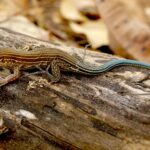
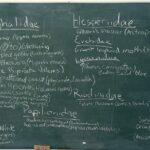
Leave a Reply